Nuclear vs. Renewables: Solution to Energy Crisis?
What Will Be Feasible for Our Future?
Jun 26, 2024
Hello!
Thesis: As the world transitions away from fossil fuels, the solution seems to be nuclear and/or renewable energy sources. Renewables are easily taking most of the share of new energy, which, from a cost, safety, expertise, and feasibility standpoint, seems like the proper course of action.
Welcome to the Insights, Innovation, and Economics blog. If you’re new here, feel free to read my general Introduction to the Blog to understand more about the blog. If you’re returning, thank you, and hope you have a great read!
If you’re new here, please consider subscribing :)

Credit MBT Transformer
Future Energy Capacity
There is a massive worldwide transition happening with energy production and energy sources. For hundreds of years, most—if not all, economic development was fueled by fossil fuels.
But this strategy won’t continue to work for our future as the damage from these energy sources is starting to express itself in various negative ways. Combine this with the exponential growth trajectories many societies face in the next 50 years, and society has a real problem.
The United States Federal Energy Regulatory Commission recently increased the projected growth in United States energy demand for the next 5 years from 2.6% per year to 4.7% (around double). This means instead of increasing our energy production capabilities by 13% in the next 5 years, we have to increase them by 25%.
It doesn’t seem like much, but this is happening all over the globe, with many countries experiencing exponentially higher growth rates. Their report finishes with this somber thought:
The solution?
Depends on who you ask.
It seems like everyone has an opinion about the underlying problems, the solutions, and the implementation of measures to stop the underlying problem. I’m purely here to provide information about some of the potential solutions and their current applications and let you decide where you stand.
The current solutions being proposed range from carbon capture to a reduction in fossil fuels, a global switch to renewables, increased nuclear energy capacity, and many more.
Either way, there are mainly two overarching strategies, (1) Manage the existing climate effects from fossil fuels (using technologies like carbon capture); and/or (2) Switch to alternative energy sources to mitigate future problems. Most scientists admit that the solution will likely be a combination of the two.
As for managing the existing climate effects, that’s a subject for a later blog (Self Promotion Alert: this means you should subscribe to see that when it comes).
Today, I’m mainly going to be speaking about alternative energy sources to mitigate these future energy problems.
There have been 3 major “buckets” of solutions proposed and employed to provide a cleaner source of energy in the future: renewables, nuclear, and geothermal energy. I’m not going to speak about geothermal energy today as I’m far from knowledgeable about the subject (don’t worry I’m working on it), but here’s a rundown of nuclear and renewables.

Credit Earth.org
Nuclear Energy
If you haven’t seen my massive article "Nuclear is Not a Viable Solution”, I encourage you to read that and it’ll give more context about the issues at hand surrounding nuclear energy and its future use.
Here’s a simple pros and cons list of nuclear energy:
Pros:
- Low Operating Emissions
- Dependable Energy Source
- High Capacity
- Most Energy Potential Per Square Foot
- Fuel Resources to Operate for Thousands of Years
- Domestic Energy Security (Less Reliant on Foreign Power Sources)
- Continuous Technology Improvements
Cons:
- Lack of Expertise
- Large Time to Build and Decommission
- Placement Issues
- Waste Problem
- Regulatory Problems
- Negative Public Perception
- Weapons Potential
- Security Issues
- Exponential Costs
For all of the reasons outlined above, nuclear power is not a viable solution for many countries.
Maybe let’s put it the opposite way. For what countries could nuclear be an effective solution?
- Countries with current nuclear expertise (23 total)
- Countries that have built at least 3 reactors since 2000, as these countries can build new reactors in an efficient timeframe (7 total)
- Countries that have the necessary infrastructure to support a nuclear reactor
- Countries with an effective plan for waste management and the infrastructure to support it
- Countries without overly strict regulations preventing the development of new nuclear reactors, but that still have enough regulations to keep the reactors safe
- Countries with a positive, current public perspective on nuclear energy
- Countries that have an effective plan to control nuclear weapon proliferation, and that aren’t at a high risk of nuclear war through diversion risk
- Countries with effective physical and cybersecurity measures to keep reactor operations safe
- Countries with financing capabilities to afford all aspects of the nuclear reactor creation, operation, and decommissioning process
How many countries do you know that satisfy all of those statements above? Very few, if any.
There are a lot of reasons why nuclear power isn't a viable solution for many countries. So why are there still so many nuclear proponents?
If you take all of the negative things away from nuclear, nuclear is a great solution. It runs all day, it’s relatively inexpensive to run day-to-day, and it creates large amounts of energy for the space it runs out of.
Yet, when you consider the good and the bad, nuclear isn’t a viable solution for almost all countries.

Credit Canadian Hydro Beyond
Renewables
Unlike nuclear, renewable energy generally refers to a variety of energy sources. Traditionally, the major players on this list have been Hydropower, Wind, and Solar.
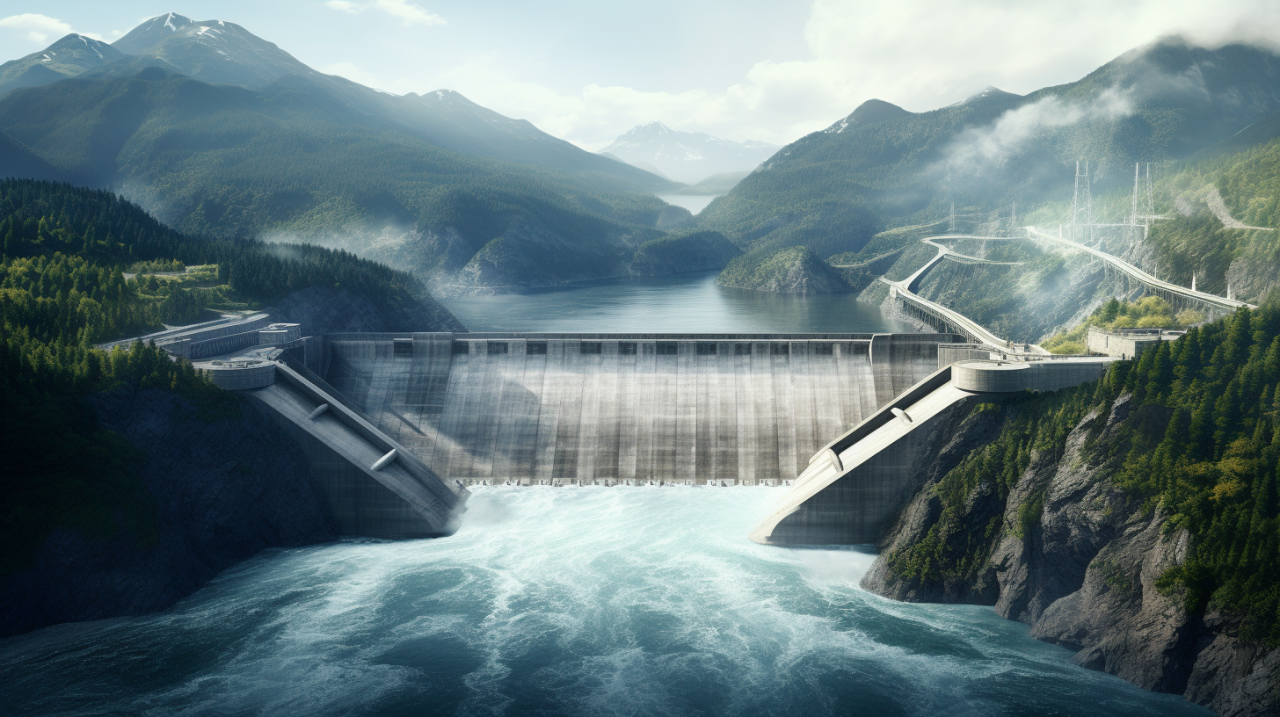
Credit LinkedIn
Hydropower
If you haven’t seen my massive article “Renewables: Is Hydropower the Best Solution?”, I encourage you to read that as it’ll give more context about the issues at hand surrounding hydropower and its future use.
Here’s a simple pros and cons list of hydropower energy:
Pros:
- Renewable Source of Energy
- Flexible to Meet Variations in Demand
- Pairs Well With Other Renewables
- Inexpensive to Operate Day-to-Day
- Domestic Energy Security (Less Reliant on Foreign Power Sources)
- Creates Lakes/Reservoirs that Can Stimulate Local Economies
Cons:
- Limited Capacity to Expand
- Adverse Environmental Impacts
- Expensive Up-Front Cost
- Susceptible to Climate Change Disruption
- Risk of Flood in Lower Areas
- Potential to Local Displace People
Hydropower has already proven itself historically to provide a solid base load of power that complements more intermittent renewable energy sources like wind and solar. Many existing hydropower facilities have decades of operational life remaining.
However, most of the best locations for large hydropower plants have already been exploited in many regions. So, most of the projected growth in hydropower is going to come from small/micro hydropower plants and pumped-storage facilities, rather than large dams.

Credit WIRED
Wind
If you haven’t seen my massive article “Renewables: Is Wind the Best Solution?”, I encourage you to read that as it’ll give more context about the issues at hand surrounding wind energy and its future use.
Here’s a simple pros and cons list of wind energy:
Pros:
- Renewable Source of Energy
- Geared Toward Everyday Consumers
- Easy to Maintain
- Ability to Generate Electricity in Any Climate
- Domestic Energy Security (Less Reliant on Foreign Power Sources)
- Continuous Innovation (Increased Capabilities and Decreased Costs)
- Solution to Rising Energy Prices
Cons:
- High Cost of Solar Startups
- Energy Storage is Expensive and Still Relatively Primitive
- Dependent on Sunlight
- Needs Large Amounts of Space to Operate
- Lack of Recycling and Disposal Solutions
- Relocation Isn’t Economical
Wind turbine technology has steadily improved in efficiency and cost-effectiveness over recent decades. Wind provides a scalable solution, with estimates citing the potential to meet over a third of global electricity demand.
However, wind is an intermittent power source, requiring storage or transmission links to firm output. Like solar, wind farms require substantial land/ocean area and can face challenges in finding a proper site to place a large-scale farm.
Overall, wind power is viewed as a critical component of the future renewable energy mix due to its abundance, scalability, and zero-emission operation. Managing intermission and placement remain challenges, but rapid growth in wind generation worldwide is widely seen as inevitable based on its environmental and economic advantages.

Credit Greater Houston Partnership
Solar
If you haven’t seen my massive article “Renewables: Is Solar the Best Solution?”, I encourage you to read that as it’ll give more context about the issues at hand surrounding solar energy and its future use.
Here’s a simple pros and cons list of solar energy:
Pros:
- Renewable Source of Energy
- Wind Turbines are Increasing in Energy Output
- New Innovations in Blade Technology
- Ground Below Wind Farms Can Have Alternate Uses
- Domestic Energy Security (Less Reliant on Foreign Power Sources)
- Easy Recycling and Disposal
Cons:
- Ideal Sites are Often in Remote Locations
- Turbines Produce Noise
- Visually Impact Landscape
- Impact Local Wildlife
- Expensive Up-Front Cost
- Unreliability
- Complicated Construction
- Offshore Wind Lacks Feasible Solutions
Solar technology has seen rapid improvements in efficiency and dramatic cost declines over the past decade. Both utility-scale solar farms and smaller rooftop solar applications offer flexibility in deployment. Solar is becoming cost-competitive with fossil fuels for power generation in many regions.
However, solar is an intermittent source, requiring storage or complementary generation sources. Solar farms can face land use constraints and placement challenges. In addition, the issues surrounding the recyclability of older solar panels still need to be addressed.
Overall, due to its renewable nature, scalability, improving economics, and flexibility in deployment models, solar power is viewed as an essential component of the future sustainable energy mix. Managing intermittency remains a challenge, but the growth potential for solar is immense based on its environmental benefits and increasing cost-competitiveness.
___
If you’re interested to know how different places are currently performing on these metrics, here are a bunch of charts:
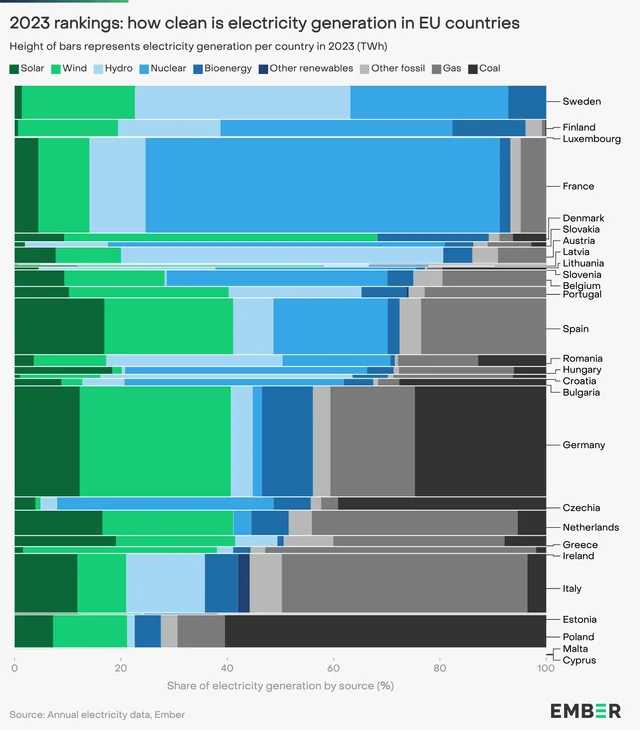
Credit Ember

Credit Ember
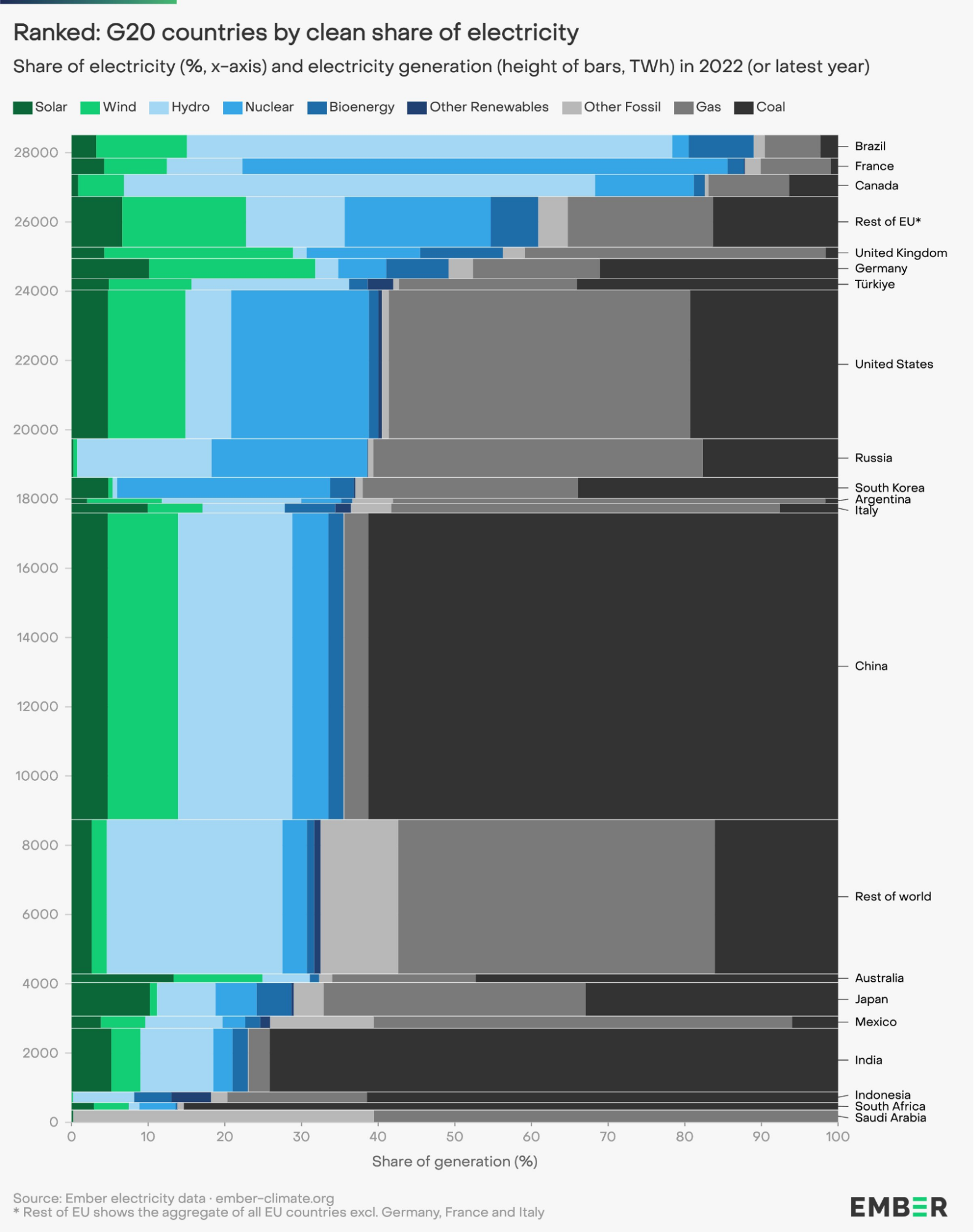
Credit Ember
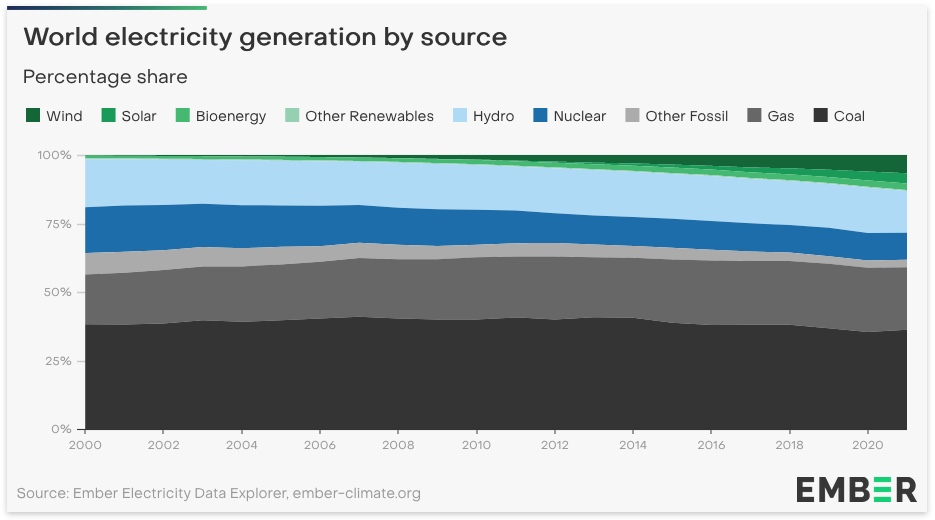
Credit Ember
Especially in the realm of energy, sources of energy are relative. The decision to use one source of energy over another depends on a variety of factors:
- Cost
- Feasibility
- Reliability
- Security
- Environmental Impact
- Technological Capability
- Social Factors
- Regulations
What Will Be the Solution?
A recent article in the Wall Street Journal entitled “As the Planet Heated Up in 2023, Clean Energy Took Off” states the following:
We have seen this sort of disruption happen before. During the Industrial Revolution, there was rapid proliferation of railways, train transport, the telegraph and steam-powered ships. More recently with the Information Revolution, we’ve watched the internet, smartphones and social media quickly take hold worldwide. And we’re witnessing it now with solar power, electric vehicles, battery storage, heat pumps and hydrogen.
Continued exponential growth in clean energy isn’t inevitable—it will require constant problem-solving and innovation in technology, supply chains, business models and policy. But rapid transformations aren’t just possible, they are well documented throughout history. In each case, there have been skeptics and laggards—those who thought that rail travel was unsafe, that the horse was here to stay, or that the internet wouldn’t survive. We’re not well equipped as a species to think exponentially versus linearly, so it is not surprising that this transition is happening faster than most expect.
But expectations matter because we build to the future that we anticipate. Underestimating the speed and dynamism of the clean-energy transition is a recipe for wasted time and capital, lost economic competitiveness and unproductive pessimism.
Even as the planet is nearing dangerous tipping points, global markets are reaching positive ones. It is at this intersection where opportunity and necessity collide, and where smart businesses will secure their—and our—future.
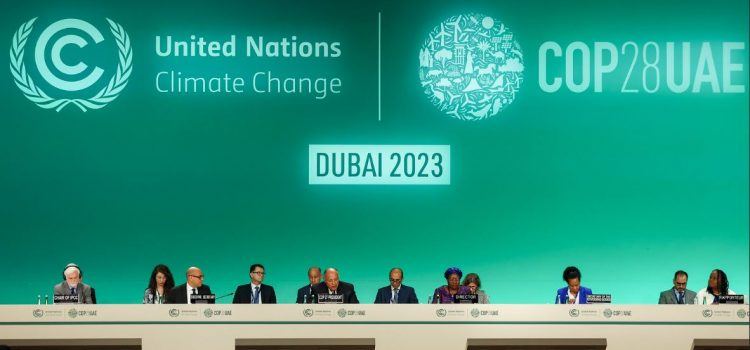
Credit Shortform
Building upon this, I think the recent United Nations Climate Change Conference in December 2023 in Dubai speaks for itself.
A headline from the Department of Energy reads:
A headline from the International Energy Agency reads:
To put these statements in context, the world energy demand is currently around 28,660 terra-watt hours per year. And, for our explanatory purposes, I’m going to assume that every single nation will triple capacity by the dates (for ease of explanation - in actuality it might be a little more complicated).
Nuclear produces 2,630 of those hours, which accounts for around 9% of the total demand. Tripling in the next 27 years would mean an average growth rate of 4.2% per year.
Renewables (wind, solar, hydropower) produce 7,680 of those hours, which accounts for around 26% of the total demand. Tripling in the next 7 years would mean an average growth rate of 17% per year.
Currently, world energy production is growing at a rate of 4.89% per year.
So, using these growth rates, we can project the production of energy and the sources over the next 7 years.
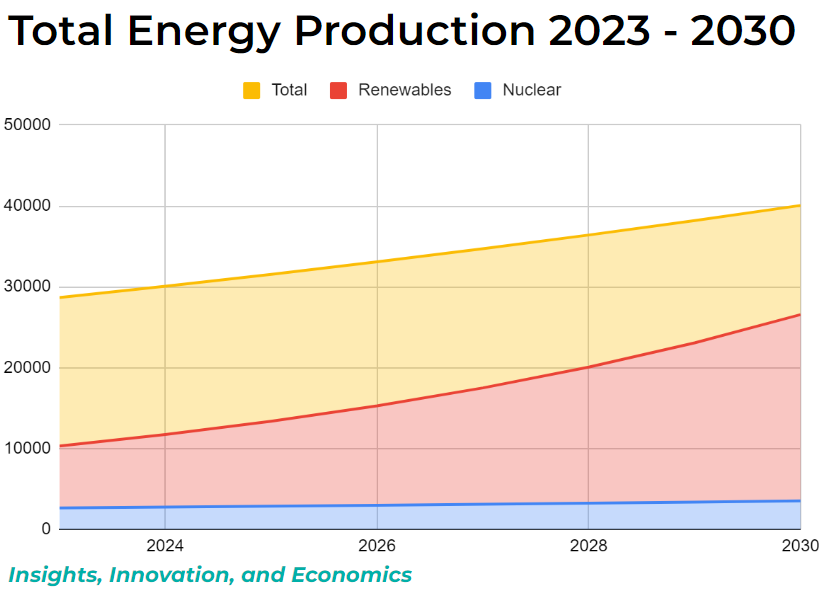
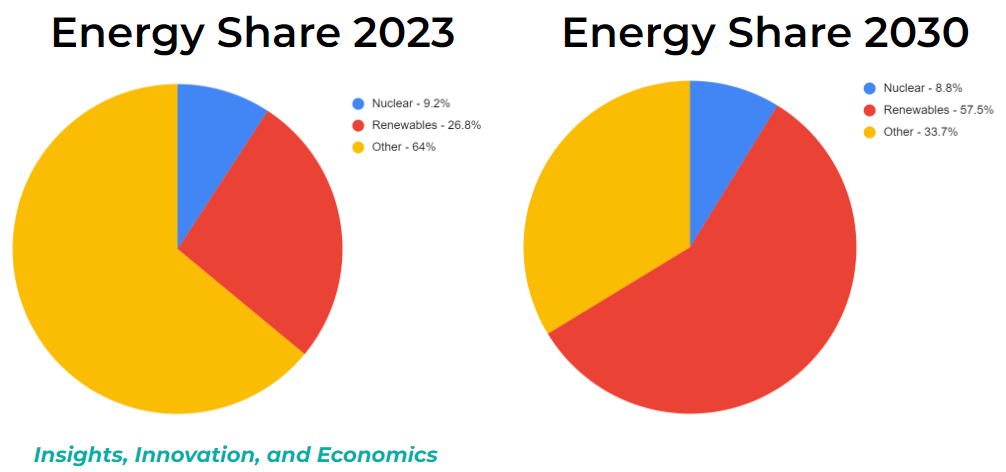
So, what will be the solution to our energy problem in the future? Pretty clear to see what’s happening.
Renewables to the moon 🚀🚀
Anywho, that’s all for today.
-Drew Jackson
If you enjoyed, please consider subscribing :)
Disclaimer:
The views expressed in this blog are my own and do not represent the views of any companies I currently work for or have previously worked for. This blog does not contain financial advice - it is for informational and educational purposes only. Investing contains risks and readers should conduct their own due diligence and/or consult a financial advisor before making any investment decisions. This blog has not been sponsored or endorsed by any companies mentioned.






